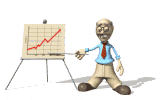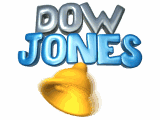|
When you buy stock, you are actually buying a share in the ownership of a company. Holding a company's stock means that you are one of many shareholders of that company. As a shareholder, you are entitled to a share of the company's earnings and assets.
If your company does well and makes a profit, dividends are sometimes paid out  to shareholders. Without dividends, you can also make money on a stock if its price goes up and you sell it. to shareholders. Without dividends, you can also make money on a stock if its price goes up and you sell it.
If your company goes bankrupt, you'll be entitled to a share of the assets left after all the creditors have been paid.
Being a shareholder also gives you one vote per share to elect the company's board of directors, who oversee the main decisions made by the company's management. It does not, however, give you a say in the day-to-day running of the business.
Although owning stocks carries risk, most financial experts believe it’s the best way to build wealth. An investment in stocks has historically had a return of 10-12%.
To buy or sell stocks, you have to go through a licensed broker, who will charge you a fee or commission. Until 1975, all brokers were required by law to charge the same amount. Since then, they have been allowed to compete.
 A full service broker provides advice, retirement planning, tax tips and research into stocks. A discount broker charges less but just buys and sells the stocks you choose yourself. A full service broker provides advice, retirement planning, tax tips and research into stocks. A discount broker charges less but just buys and sells the stocks you choose yourself.
|
On the Internet, you’ll find lots of online discount brokers. Some provide access to high quality research, too.
You can open an account with the brokerage of your choice with as little as $20,  but be sure to check the minimum balance required by your particular broker. Some say you’ll need $1,000 or more to begin your stock market investment. but be sure to check the minimum balance required by your particular broker. Some say you’ll need $1,000 or more to begin your stock market investment.
Stocks are bought and sold on stock exchanges where buyers and sellers meet and decide on a price. You've no doubt seen pictures of people wildly waving their arms on a crowded stock exchange floor.
In our country, all companies must register their stocks with either the American Stock Exchange (AMEX), the New York Stock Exchange (NYSE), the National Association of Securities Dealers Automated Quotation (NASDAQ), or one of nine regional stock exchanges.
 Investors look at the Dow Jones Industrial Average to figure out how the stock market is doing. Under this system invented by Charles Dow in 1896, analysts watch the buying and selling of the same thirty high quality stocks (called the Dow Industrials) as an indicator of the entire market. Investors look at the Dow Jones Industrial Average to figure out how the stock market is doing. Under this system invented by Charles Dow in 1896, analysts watch the buying and selling of the same thirty high quality stocks (called the Dow Industrials) as an indicator of the entire market.
The S&P 500 is another index of 500 stocks used as a benchmark for the overall stock market. Other indices include the NASDAQ Composite, NASDAQ 100 and the NYSE Composite.
When stock market prices are rising, it is called a " bull market." When prices fall 15% or more, it's called a "bear market." bull market." When prices fall 15% or more, it's called a "bear market." |